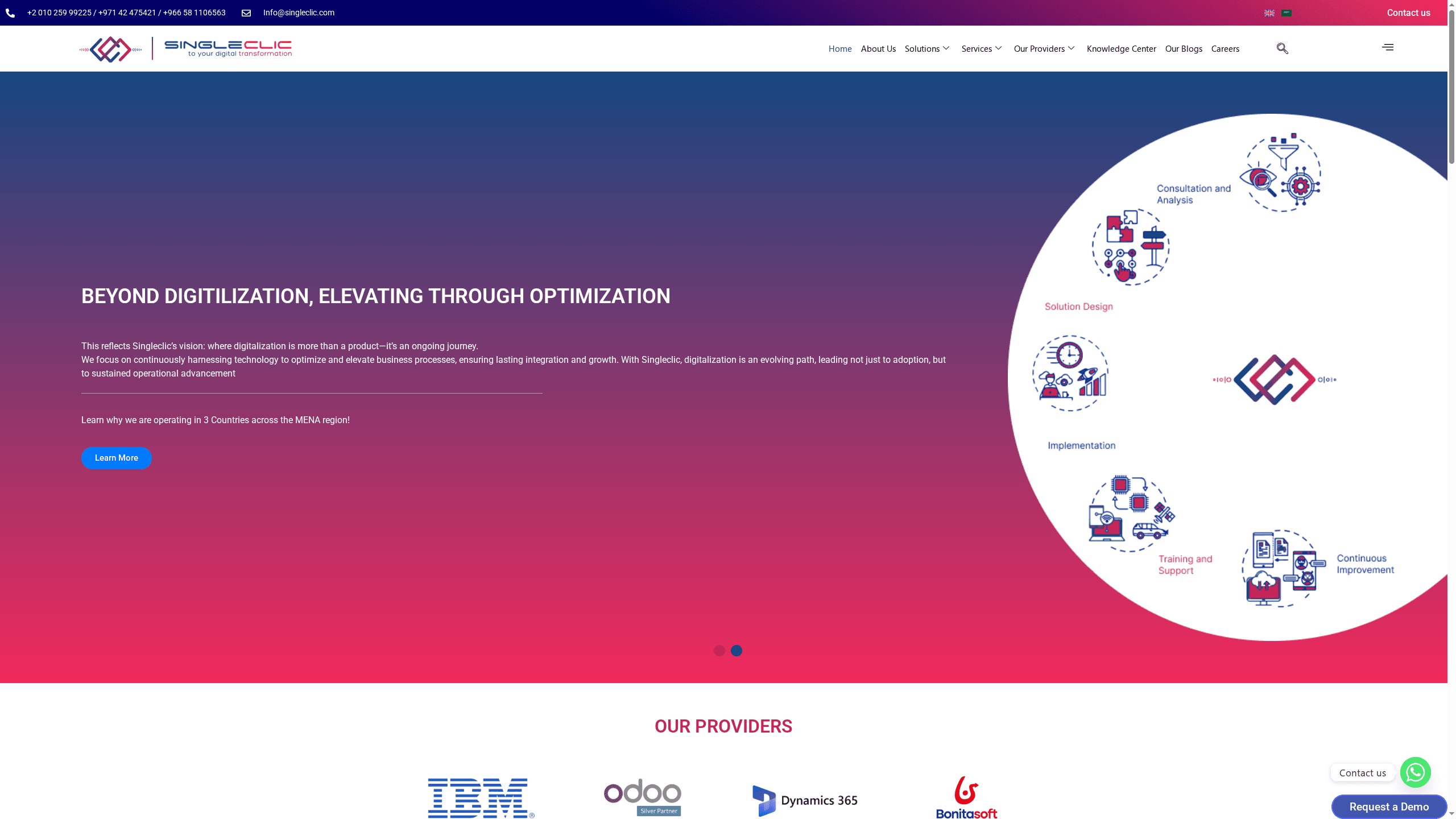Nearly 90 percent of businesses now identify digital strategy as a top priority, yet many struggle to define what it actually means. As organizations race to keep up with rapid technological change, understanding the pillars of digital strategy becomes critical for long-term growth and survival. This guide gives you clarity on digital strategy’s true purpose, highlights the key elements driving success, and helps you steer clear of common mistakes in the digital age.
Table of Contents
- Defining Digital Strategy And Core Concepts
- Types Of Digital Strategy Initiatives
- Key Elements Of Successful Digital Strategy
- Stages Of Digital Strategy Implementation
- Common Challenges And Mistakes To Avoid
Key Takeaways
| Point | Details |
|---|---|
| Holistic Digital Strategy | A successful digital strategy aligns technology investments with organizational goals, emphasizing continuous innovation and customer experiences. |
| Tailored Initiatives | Digital strategy initiatives should be customized to industry-specific needs, addressing unique challenges and opportunities for each sector. |
| Critical Implementation Stages | Implementing a digital strategy involves assessing current capabilities, defining clear objectives, developing a roadmap, and monitoring progress continuously. |
| Common Pitfalls to Avoid | Organizations should focus on aligning business and IT objectives, managing cultural resistance effectively, and establishing robust measurement frameworks for digital initiatives. |
Defining Digital Strategy And Core Concepts
A digital strategy is more than a technology implementation plan – it’s a comprehensive roadmap for transforming how businesses leverage digital capabilities to drive competitive advantage. According to TechTarget, a digital strategy represents a sophisticated plan for maximizing business benefits through data assets and technology-focused initiatives.
At its core, digital strategy involves creating a holistic approach that aligns technology investments with broader organizational goals. This means bringing together cross-functional teams from executive leadership, marketing, and information technology to develop a unified vision. The primary objective is delivering a consistent and compelling digital experience that meets evolving customer expectations and drives operational efficiency.
Key Components of Digital Strategy
A robust digital strategy typically encompasses several critical elements:
- Technology Infrastructure: Selecting and implementing the right digital tools and platforms
- Data Analytics: Leveraging data insights to inform strategic decision making
- Customer Experience Design: Creating seamless digital interactions across multiple touchpoints
- Innovation Framework: Establishing processes for continuous digital transformation
When developing a digital strategy, organizations must move beyond tactical technology deployments and focus on creating value. This requires understanding how digital capabilities can fundamentally reshape business models, customer relationships, and competitive positioning.

The ultimate goal is not simply digitizing existing processes, but reimagining how value is created and delivered in an increasingly digital world. Digital Strategy vs Digital Transformation represents a nuanced journey of strategic evolution that demands both visionary thinking and pragmatic execution.
Types Of Digital Strategy Initiatives
Digital strategy initiatives are not one-size-fits-all but instead tailored to specific organizational needs and industry contexts. According to Bakkah, digital transformation varies dramatically across different sectors, with each industry developing unique approaches to digital innovation.
In healthcare, for instance, digital initiatives might focus on telemedicine platforms and electronic health record systems, while banking sectors prioritize mobile app development and AI-powered personalized financial services. These targeted approaches demonstrate how digital strategies must be strategically aligned with industry-specific challenges and opportunities.
Core Digital Strategy Initiatives
Effective digital strategy typically encompasses several key initiative types:
- Customer Experience Transformation: Redesigning digital touchpoints and interactions
- Operational Process Digitization: Automating and streamlining internal workflows
- Data-Driven Decision Making: Implementing advanced analytics and business intelligence tools
- Technology Infrastructure Modernization: Upgrading legacy systems and adopting cloud technologies
Research from arXiv highlights that successful business architecture practices can significantly improve organizational alignment and efficiency. This means digital strategy initiatives should not just introduce new technologies, but fundamentally reimagine how technology can enhance service delivery and create competitive advantages.
Organizations must view digital strategy as an ongoing journey of continuous innovation, Top 4 Types of Digital Transformation requires a holistic approach that balances technological capabilities with strategic vision. By understanding and implementing targeted digital initiatives, businesses can transform potential technological disruptions into sustainable opportunities for growth and differentiation.
Key Elements Of Successful Digital Strategy
Crafting a truly successful digital strategy requires more than just technological implementation. According to Skolon, a comprehensive digital strategy demands holistic alignment across multiple organizational dimensions, including strategic vision, technological infrastructure, and human capabilities.
The foundational elements of a robust digital strategy extend far beyond simple technology adoption. Successful organizations recognize that digital transformation is a complex journey involving careful integration of technological tools, organizational processes, and human expertise. This means creating an adaptive framework that can evolve with changing technological landscapes and business requirements.
Critical Components of Digital Strategy Excellence
Key elements of a successful digital strategy include:
- Strategic Alignment: Ensuring digital initiatives directly support broader business objectives
- Technological Infrastructure: Building flexible, scalable digital ecosystems
- Cybersecurity Integration: Implementing robust security protocols across digital platforms
- Continuous Learning: Developing organizational capabilities through ongoing staff training
- Stakeholder Engagement: Creating transparent communication channels
Research from arXiv emphasizes that effective business architecture practices are crucial for successful digital transformation. This involves meticulously aligning business processes with digital initiatives and strategically integrating data from multiple sources to drive organizational efficiency.
Ultimately, a successful digital strategy is not a static document but a dynamic roadmap for continuous innovation. Digital Transformation Strategy Guide represents an essential resource for leaders looking to navigate the complex terrain of digital evolution, transforming potential technological challenges into sustainable competitive advantages.
Stages Of Digital Strategy Implementation
Implementing a digital strategy is a structured yet dynamic process that requires careful planning and execution. According to research from arXiv, successful digital strategy implementation follows a systematic approach with distinct stages designed to ensure comprehensive organizational transformation.
The journey begins with a thorough assessment of current technological capabilities and organizational readiness. This initial diagnostic phase helps leaders understand existing infrastructure, identify potential gaps, and develop a clear baseline for digital transformation. Companies must critically evaluate their technological ecosystem, cultural preparedness, and strategic alignment before embarking on any digital initiative.
Sequential Stages of Digital Strategy Deployment
A comprehensive digital strategy implementation typically involves these critical stages:
![]()
-
Current State Assessment
- Evaluate existing technological infrastructure
- Analyze organizational capabilities and digital maturity
- Identify potential technological and cultural barriers
-
Strategic Objective Definition
- Establish clear, measurable digital transformation goals
- Align digital initiatives with broader business strategy
- Define key performance indicators (KPIs)
-
Roadmap Development
- Create a detailed implementation plan
- Prioritize digital initiatives
- Allocate resources and budget
-
Execution and Implementation
- Roll out digital transformation initiatives
- Manage change management processes
- Provide necessary training and support
-
Continuous Monitoring and Optimization
- Track progress against defined KPIs
- Implement feedback loops
- Adjust strategy based on real-world performance
Research from another arXiv study highlights the importance of theorization and contextualization in enterprise architecture, emphasizing that successful digital strategies must balance generalized best practices with organization-specific adaptations.
Ultimately, digital strategy implementation is not a linear process but an iterative journey of continuous learning and adaptation. Digital Transformation Strategy Guide offers leaders a comprehensive framework for navigating this complex transformation, ensuring that technological investments translate into tangible business value.
Common Challenges And Mistakes To Avoid
Digital strategy implementation is fraught with potential pitfalls that can derail even the most well-intentioned transformation efforts. According to research from arXiv, some of the most critical challenges include misalignment between business and IT departments, lack of clear strategic objectives, and inadequate measurement of digital initiative outcomes.
Organizations often stumble by approaching digital strategy as a technology-only initiative, overlooking the fundamental human and cultural elements that drive successful transformation. This myopic view can lead to significant resistance, reduced adoption rates, and ultimately, failure of digital investments. Successful digital strategies require a holistic approach that considers technological capabilities, organizational culture, and strategic alignment.
Critical Challenges in Digital Strategy
Key challenges and potential mistakes to avoid include:
-
Misaligned Objectives
- Implementing technology without clear business goals
- Failing to connect digital initiatives to strategic outcomes
- Pursuing digital transformation for its own sake
-
Cultural Resistance
- Inadequate change management processes
- Insufficient staff training and engagement
- Lack of leadership buy-in and support
-
Measurement and Evaluation Gaps
- Poor definition of key performance indicators
- Inconsistent or superficial tracking of digital initiative impacts
- Neglecting continuous improvement mechanisms
Research from another arXiv study underscores the challenges in evaluating software process improvements, highlighting the complexity of accurately assessing digital transformation initiatives. This complexity demands robust evaluation frameworks that go beyond surface-level metrics.
Ultimately, avoiding these common pitfalls requires a strategic, nuanced approach to digital transformation. Digital Transformation Strategy Guide provides leaders with critical insights into navigating these challenges, transforming potential obstacles into opportunities for organizational growth and innovation.
Unlock Your Digital Strategy Potential with Proven Expertise
Understanding and implementing a digital strategy can be complex and challenging. This guide highlights common pitfalls like misaligned objectives and cultural resistance that can stop transformation efforts from succeeding. The article emphasizes how strategic alignment and continuous optimization are essential for turning digital initiatives into real business value. If you are aiming to reimagine how technology drives your organization’s growth while ensuring flawless execution, Singleclic offers the solutions to bridge that gap.

Experience confidence in your digital transformation journey with Singleclic. Specializing in Microsoft Dynamics 365 ERP, CRM, and low code automation, we have delivered large-scale projects for governments and enterprises across the Middle East. Our approach follows international standards through clear stages including inception, requirements management, development, and quality assurance. Visit Singleclic now to explore how our tailored digital transformation solutions can align your technology with your strategic goals and overcome the very challenges detailed in this executive guide. Take the next step toward seamless innovation and operational excellence today.
Frequently Asked Questions
What is the definition of digital strategy?
A digital strategy is a comprehensive roadmap designed to transform how businesses leverage digital capabilities to create a competitive advantage. It integrates technology investments with broader organizational goals to enhance customer experience and operational efficiency.
What are the key components of a successful digital strategy?
Key components include technology infrastructure, data analytics, customer experience design, and an innovation framework. These elements work together to ensure that digital initiatives effectively enhance business operations and customer interactions.
What are common challenges to implementing a digital strategy?
Common challenges include misalignment between business and IT objectives, cultural resistance to change, lack of clear strategic goals, and insufficient measurement of digital initiative outcomes, which can hinder successful transformation efforts.
How do organizations measure the success of their digital strategy initiatives?
Organizations measure success through defined key performance indicators (KPIs) that align with strategic goals. Continuous monitoring and evaluation help in tracking progress and optimizing the digital strategy based on real-world performance.









